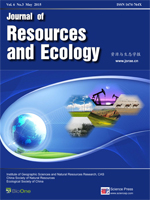Atmospheric nitrogen (N) deposition may affect carbon (C) sequestration in terrestrial ecosystem. The main objective of this paper was to test the hypothesis that N addition would increase CO2 emission in the N limited meadow steppe in Inner Mongolia, China. Response of CO2 fluxes to simulated N deposition was studied in the growing season of 2008 and 2009 by static chamber and gas chromatograph techniques. Parallel to the flux measurements, soil temperature, soil moisture, TOC, DOC, soil NH4 and NO3- were measured at the same time. The results indicated that two-year N additions had no significant effect on NH4 , but slightly increased NO3- in the later period. The HN treatment tended to increase CO2 fluxes in the two years, and LN treatment tended to decrease CO2 fluxes in 2008, and shifted to increase CO2 fluxes in later growing season of 2009. N addition significantly increased the aboveground biomass and root biomass. The correlation between CO2 fluxes and moisture or temperature factors did not significantly change due to N addition, but N addition enhanced the moisture sensitivity of CO2 fluxes as well as the temperature sensitivity of CO2 fluxes. These results suggest that the increasing ammonium N deposition would be likely to stimulate CO2 fluxes in the meadow steppe of Inner Mongolia, China.
How to translate text using browser tools
1 May 2015
Effects of Simulated NH4 Deposition on CO2 Fluxes in the Hulun Buir Meadow Steppe of Inner Mongolia, China
Liu Xingren,
Zhang Leiming,
Zhang Caihong,
Ren Jianqiang,
Li Shenggong
ACCESS THE FULL ARTICLE

Journal of Resources and Ecology
Vol. 6 • No. 3
May 2015
Vol. 6 • No. 3
May 2015
CO2 fluxes
inner Mongolia
N addition
N deposition




